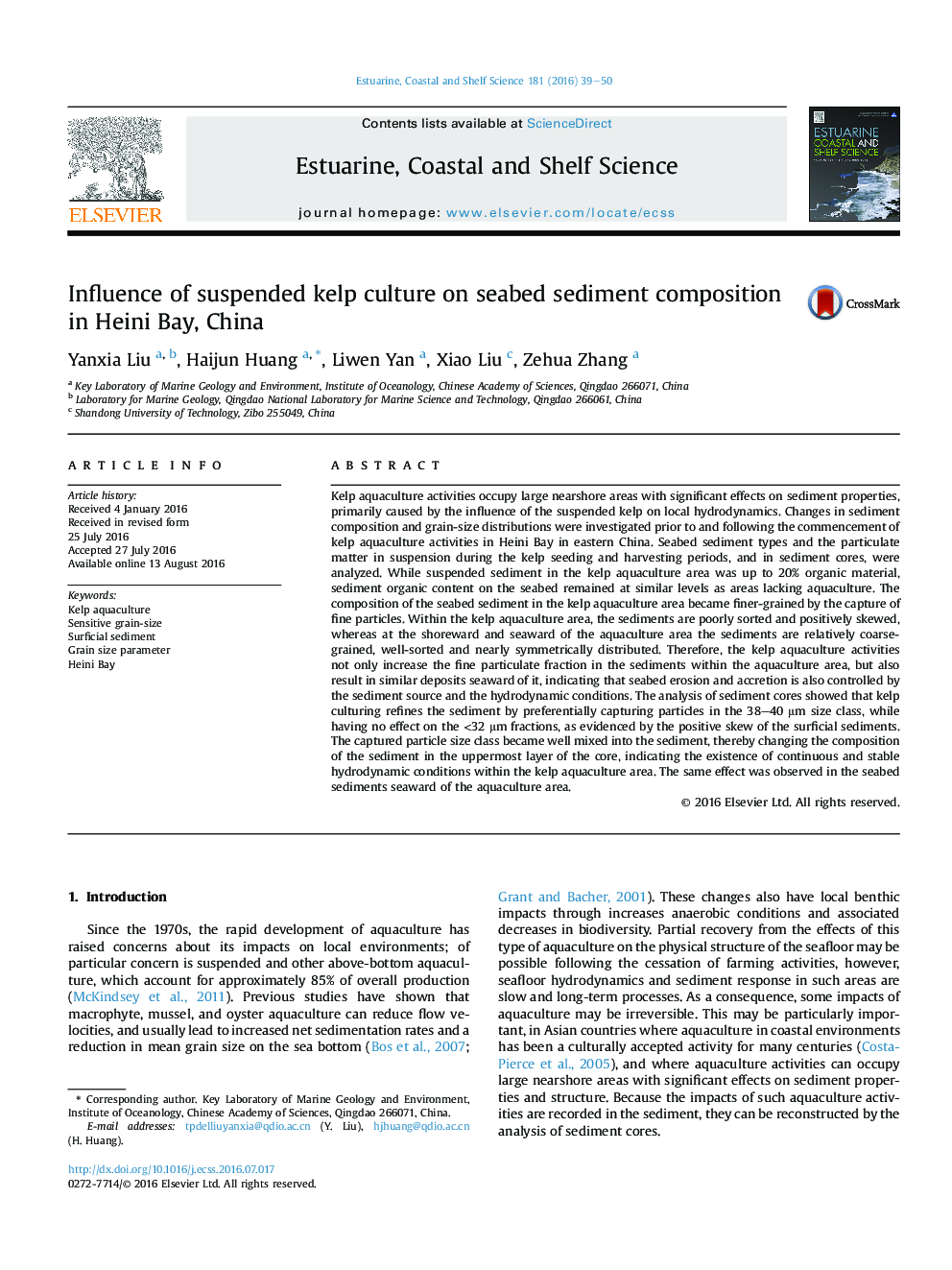| Article ID | Journal | Published Year | Pages | File Type |
|---|---|---|---|---|
| 4539124 | Estuarine, Coastal and Shelf Science | 2016 | 12 Pages |
Kelp aquaculture activities occupy large nearshore areas with significant effects on sediment properties, primarily caused by the influence of the suspended kelp on local hydrodynamics. Changes in sediment composition and grain-size distributions were investigated prior to and following the commencement of kelp aquaculture activities in Heini Bay in eastern China. Seabed sediment types and the particulate matter in suspension during the kelp seeding and harvesting periods, and in sediment cores, were analyzed. While suspended sediment in the kelp aquaculture area was up to 20% organic material, sediment organic content on the seabed remained at similar levels as areas lacking aquaculture. The composition of the seabed sediment in the kelp aquaculture area became finer-grained by the capture of fine particles. Within the kelp aquaculture area, the sediments are poorly sorted and positively skewed, whereas at the shoreward and seaward of the aquaculture area the sediments are relatively coarse-grained, well-sorted and nearly symmetrically distributed. Therefore, the kelp aquaculture activities not only increase the fine particulate fraction in the sediments within the aquaculture area, but also result in similar deposits seaward of it, indicating that seabed erosion and accretion is also controlled by the sediment source and the hydrodynamic conditions. The analysis of sediment cores showed that kelp culturing refines the sediment by preferentially capturing particles in the 38–40 μm size class, while having no effect on the <32 μm fractions, as evidenced by the positive skew of the surficial sediments. The captured particle size class became well mixed into the sediment, thereby changing the composition of the sediment in the uppermost layer of the core, indicating the existence of continuous and stable hydrodynamic conditions within the kelp aquaculture area. The same effect was observed in the seabed sediments seaward of the aquaculture area.
